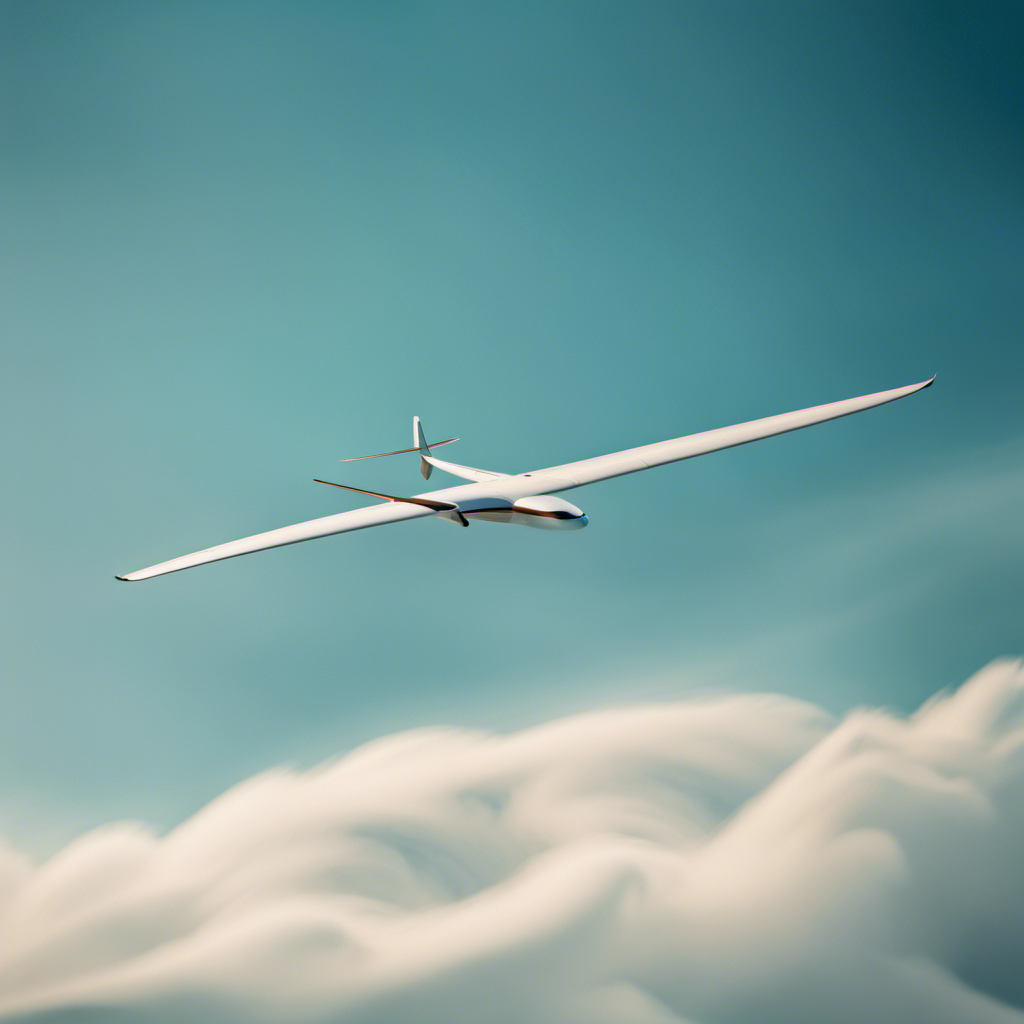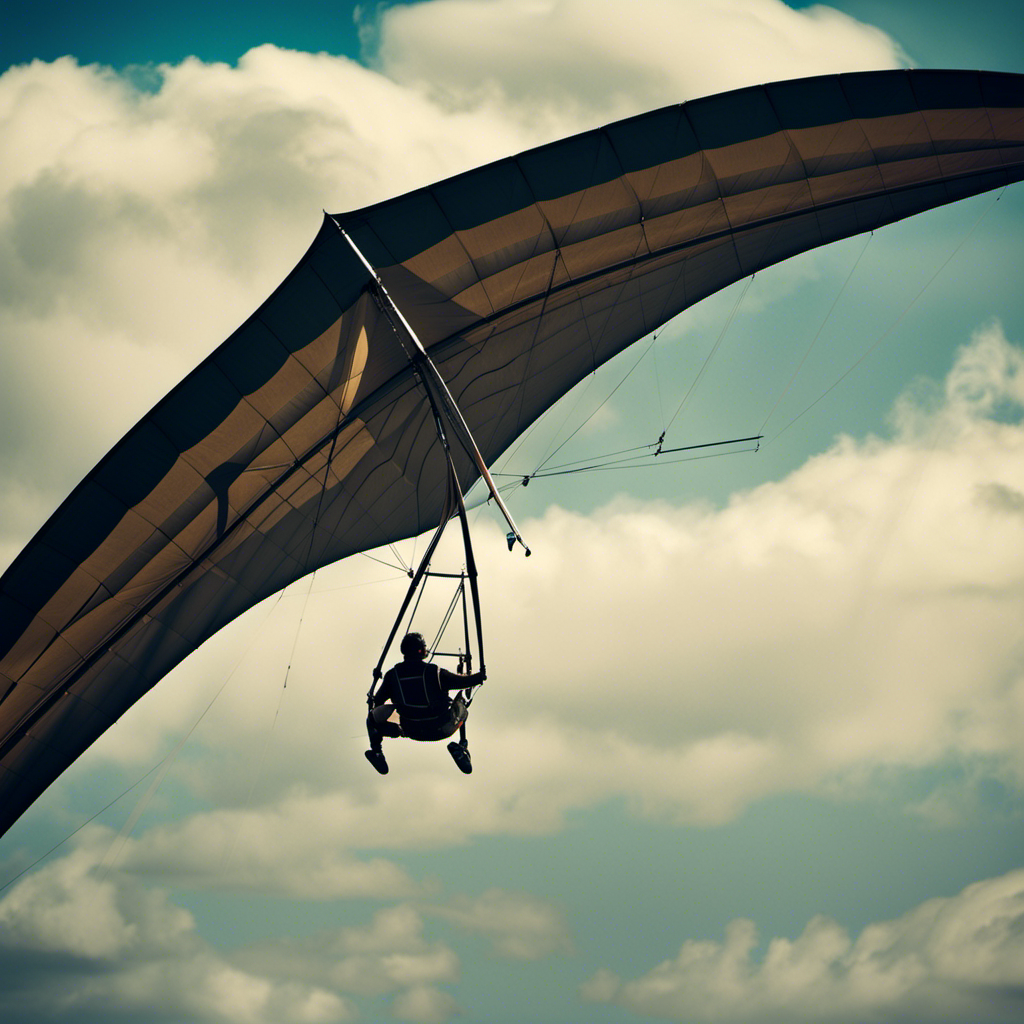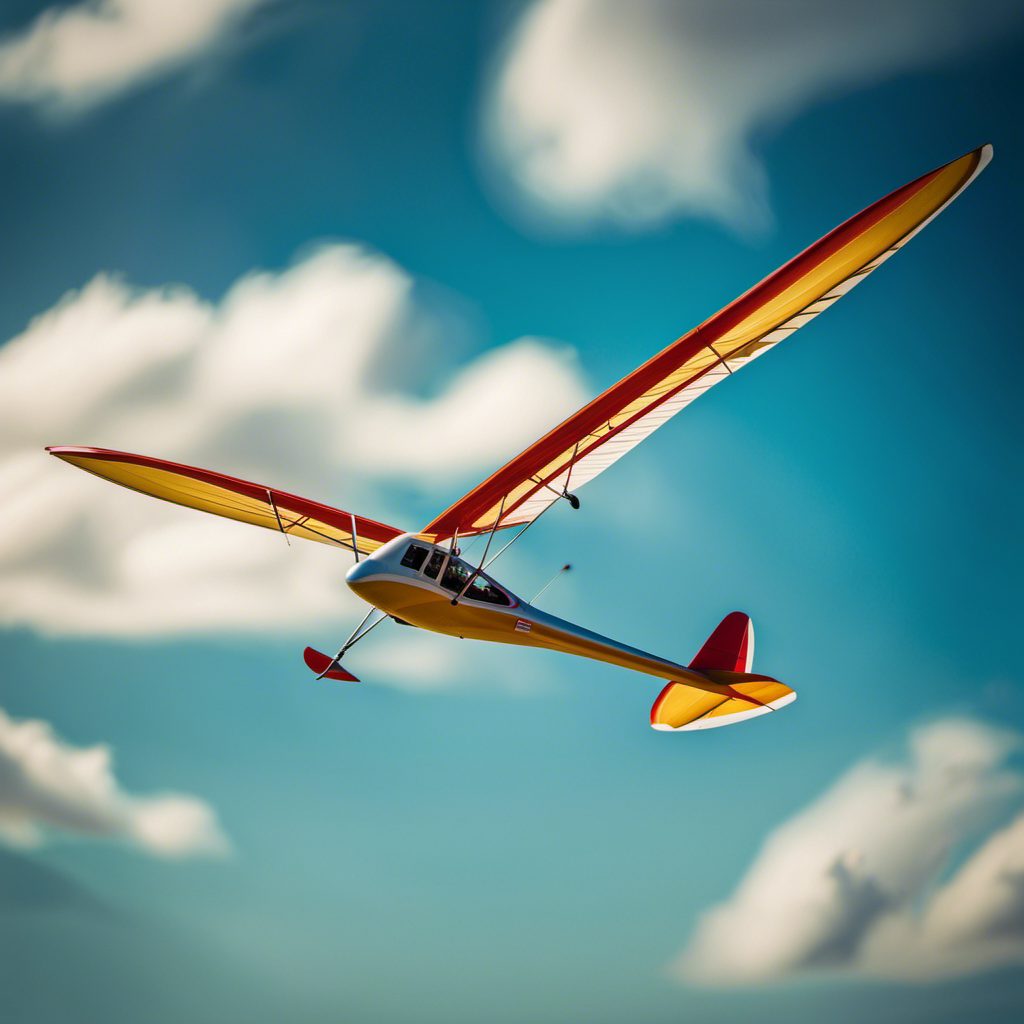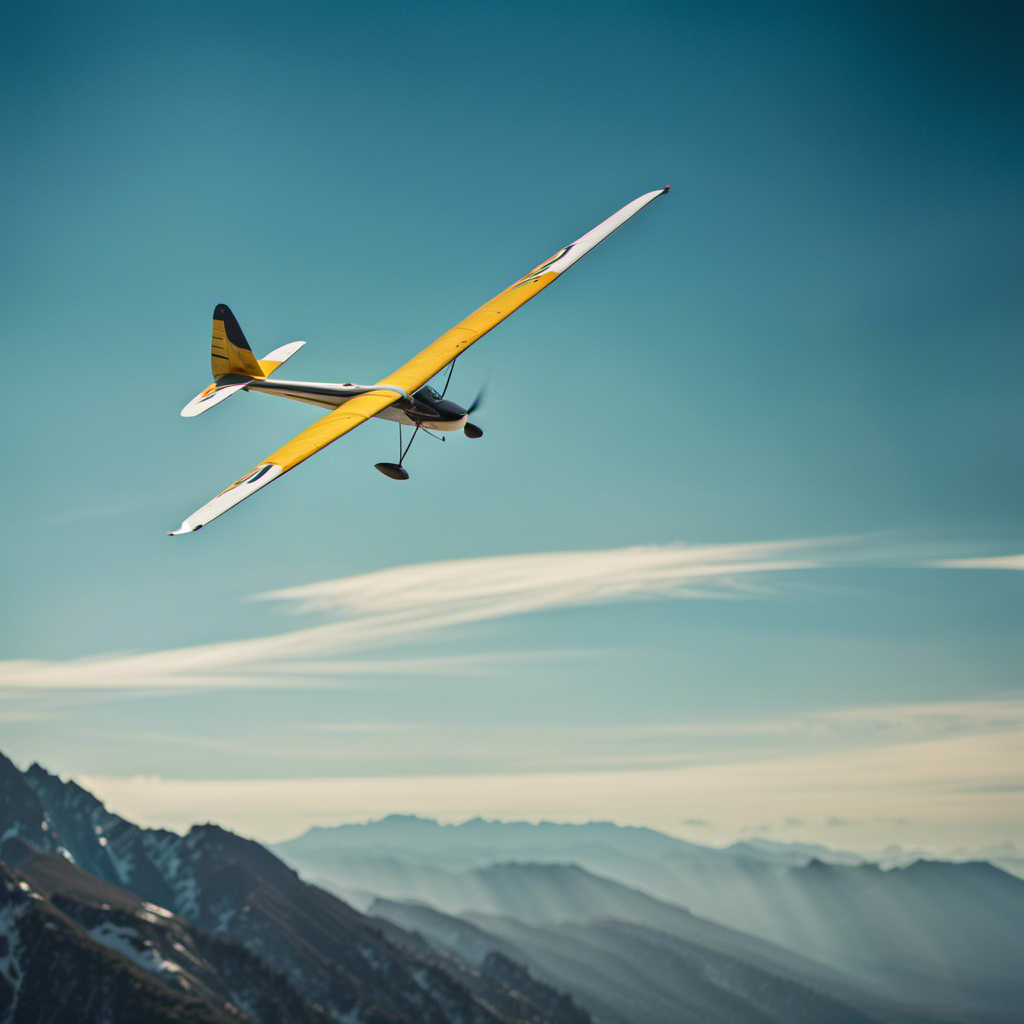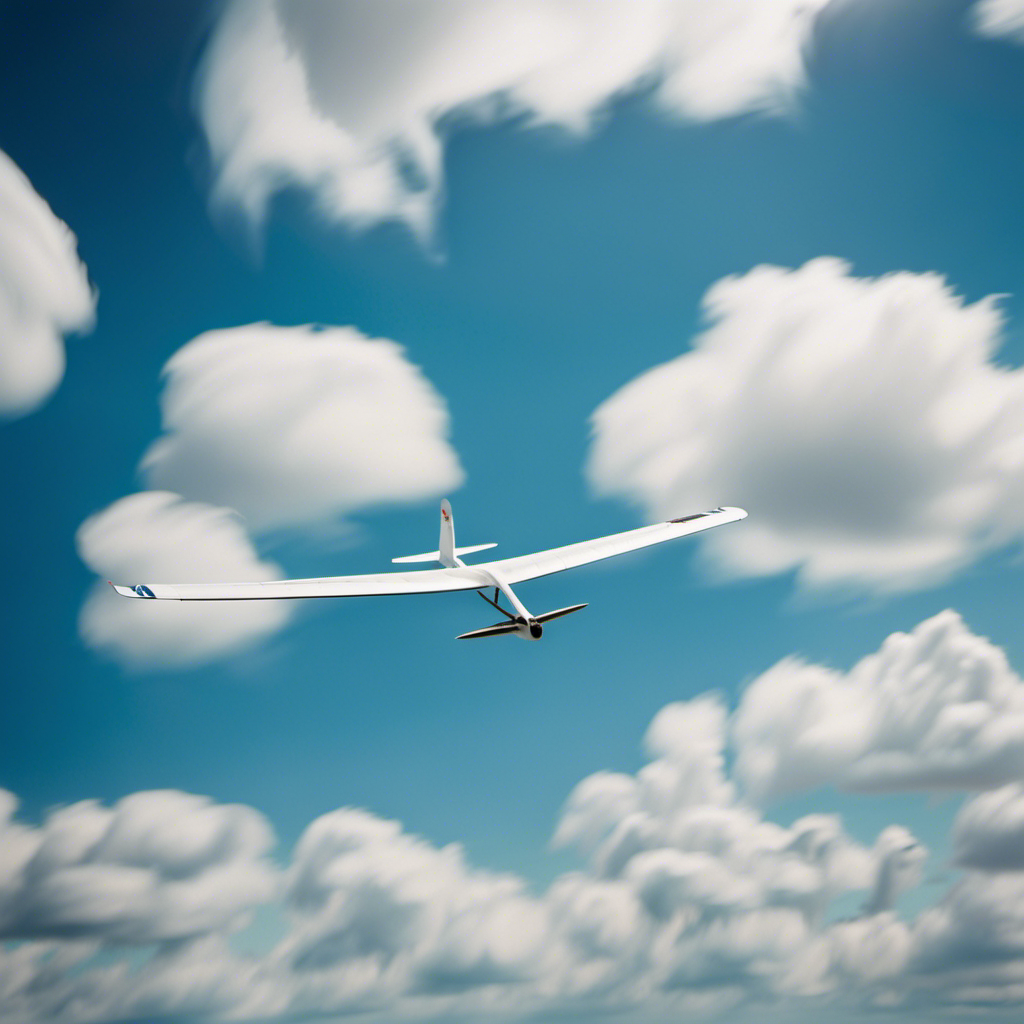Imagine soaring through the sky, gliding effortlessly through the atmosphere like a bird in flight.
Gliding, the exhilarating sport of flying without an engine, offers a unique experience that allows you to feel the freedom and serenity of being one with the elements.
In this article, we will explore the fascinating world of gliding, from its rich history and how it works, to the different types of gliders and the safety measures involved.
Get ready to embark on a journey into the wonders of gliding and discover why it has captured the hearts of enthusiasts worldwide.
Key Takeaways
- Gliding involves perfect control inputs and the ability to read air currents.
- Gliding competitions test skills in aerodynamics, navigation, and reading weather patterns.
- Gliding offers physical fitness, stress relief, and the development of quick decision-making skills.
- Gliding destinations like the Swiss Alps provide varied terrain and a thriving gliding community.
The History of Gliding
The history of gliding dates back to the 19th century when early pioneers began experimenting with flying without an engine. These pioneers were fascinated by the idea of soaring through the air like birds, and they sought to harness the power of the wind to achieve this dream.
They started by constructing gliders made of lightweight materials such as wood and fabric. These early gliders were simple and lacked the sophisticated controls we have today, but they laid the foundation for modern gliding.
Over time, advancements in technology and aerodynamics led to the development of more efficient gliders that could stay aloft for longer periods of time. This paved the way for the development of modern gliding techniques and practices.
Understanding the history of gliding provides valuable insights into how gliding works and the principles behind it.
How Gliding Works
Understanding how gliding works involves grasping the principles of lift and air pressure. Here’s a breakdown of how gliding operates:
-
Lift: Gliders rely on lift to stay airborne. As the glider moves through the air, the shape of its wings, known as airfoils, generates lift by creating a pressure difference between the upper and lower surfaces of the wings.
-
Air Pressure: Gliders take advantage of the difference in air pressure to maintain altitude. By adjusting the angle of attack, pilots can control the amount of lift generated and control the glider’s rate of descent or climb.
-
Energy Management: Gliding involves careful management of energy. Pilots use updrafts, thermals, and ridge lift to gain altitude and extend their flight time. They also employ techniques like speed control and weight shifting to maximize efficiency and maintain control.
Understanding these principles is crucial to grasp the mechanics of gliding. Now, let’s delve into the different types of gliders available.
Types of Gliders
When it comes to gliding, there are three main types of gliders that you should know about: sailplanes, hang gliders, and paragliders.
Sailplanes are sleek and aerodynamic aircraft that are designed for long-distance flights.
Hang gliders, on the other hand, are lightweight and flexible, allowing the pilot to hang underneath the wing and control the glider using their body movements.
Lastly, paragliders are similar to hang gliders but use a different design, with a parachute-like wing that allows for slower, more controlled flights.
Sailplanes
Sailplanes are a popular choice for gliding enthusiasts. These sleek and efficient aircraft are designed to be flown without an engine, relying solely on gravity and air currents to stay aloft. With their long wingspan and high aspect ratio, sailplanes are able to achieve impressive glide ratios, allowing them to cover long distances with minimal loss of altitude.
The cockpit of a sailplane is equipped with instruments that provide crucial information about airspeed, altitude, and the surrounding weather conditions. Sailplanes are often launched using a winch or a tow plane, and once in the air, pilots can navigate using thermals, ridge lift, or wave lift.
Now, let’s move on to the next type of glider, hang gliders, which offer a completely different flying experience.
Hang Gliders
To experience the thrill of free flight, you can try hang gliding, which offers a completely different flying sensation. Hang gliders are foot-launched aircraft that rely on the pilot’s weight shift to control direction and speed. The pilot is suspended in a harness beneath a wing made of aluminum tubes and a fabric sail.
The feeling of soaring through the air with the wind rushing past you is truly exhilarating. Hang gliding allows you to experience the freedom of flight in its purest form as you glide through the sky like a bird.
Now, let’s move on to another exciting form of free flight: paragliders.
Paragliders
Hang gliders are not the only type of aircraft used for gliding; another popular option is the paraglider. Paragliders are lightweight, free-flying aircraft that consist of a fabric wing and a harness. Unlike hang gliders, paragliders do not have a rigid frame and their wing shape is formed by the air pressure entering the vents on the front of the wing.
This flexible design allows paragliders to be easily packed and carried in a backpack, making them highly portable and convenient for gliding enthusiasts. In addition, paragliders have a slower stall speed compared to hang gliders, which means they can fly at slower speeds and in lighter wind conditions.
As we move on to discussing the equipment and safety measures involved in gliding, it’s important to understand the unique characteristics of both hang gliders and paragliders.
Equipment and Safety Measures
When gliding, make sure you’re familiar with the equipment and safety measures. Gliding is an exhilarating activity that requires proper gear and precautions to ensure a safe and enjoyable experience. Before taking flight, it’s important to understand the equipment you’ll be using and how to use it correctly. This includes knowing how to properly secure your harness, adjust your wing, and maintain your equipment. In addition to equipment knowledge, there are safety measures that must be followed to minimize risks. This includes checking weather conditions, avoiding flying in restricted airspace, and being aware of emergency procedures. To give you a better understanding, here is a table outlining some essential gliding equipment and safety measures:
| Equipment | Purpose | Safety Measure |
|---|---|---|
| Paraglider | Provides lift and control | Regular inspections |
| Harness | Attaches pilot to the wing | Proper fitting |
| Helmet | Protects head from impacts | Wearing at all times |
| Reserve parachute | Emergency backup in case of wing failure | Regular repacking |
| Radio | Communication with ground crew and other pilots | Proper usage and frequency |
Learning to Glide
Once you’ve mastered the basics of equipment and safety measures, it’s time to focus on learning how to glide effectively and confidently.
Gliding is the art of maintaining and controlling your flight without the aid of an engine. It requires a deep understanding of aerodynamics, wind patterns, and precise control inputs.
To begin, you must develop a feel for the glider’s controls, such as the ailerons, elevator, and rudder. These controls allow you to manipulate the glider’s attitude and direction.
As you gain experience, you’ll learn to read the air currents and use them to your advantage, maximizing your time aloft. Gliding techniques and skills are essential in order to navigate thermals, perform turns, and execute landings with finesse.
With practice, you’ll become one with the glider, effortlessly soaring through the sky.
Gliding Techniques and Skills
To improve your gliding techniques and skills, you should focus on perfecting your control inputs and reading air currents. By mastering these aspects, you will be able to maneuver your glider with precision and maximize your efficiency in the air. Control inputs refer to the actions you take to manipulate the controls of the glider, such as the ailerons, elevator, and rudder. These inputs allow you to control the pitch, roll, and yaw of the glider, enabling you to maintain stability and make precise turns. Additionally, understanding air currents is crucial for gliding effectively. By reading the subtle changes in wind direction and speed, you can find areas of rising air, or thermals, which can help you gain altitude and extend your flight time. Incorporating these techniques into your gliding practice will greatly enhance your abilities as a pilot.
| Control Inputs | Description | Purpose |
|---|---|---|
| Ailerons | Control the roll of the glider | Maintain stability and make turns |
| Elevator | Control the pitch of the glider | Adjust the glider’s altitude |
| Rudder | Control the yaw of the glider | Coordinate turns and maintain directional stability |
Gliding Competitions and Events
Competitors in gliding events showcase their skills and compete against each other to demonstrate their proficiency in maneuvering gliders. Gliding competitions are an exciting way for pilots to push their abilities to the limit while testing their knowledge of aerodynamics and navigation.
These events typically involve various tasks, such as speed races, distance flights, and precision landings. Pilots must rely on their expertise in reading weather patterns, understanding thermals, and making strategic decisions to maximize their performance.
Gliding events not only provide a platform for pilots to showcase their talent, but they also foster a sense of camaraderie and sportsmanship among participants. These competitions encourage continuous learning and improvement, as pilots strive to achieve higher scores and better results.
Benefits of Gliding
Now that you have learned about the exhilarating world of gliding competitions and events, let’s explore the many benefits of gliding. Gliding offers a unique experience that combines the thrill of flying with the tranquility of soaring through the skies. Not only does it provide an opportunity to connect with nature, but it also offers numerous physical and mental advantages. Here is a table summarizing some of the key benefits of gliding:
| Benefit | Description |
|---|---|
| Physical Fitness | Gliding requires physical coordination and muscle control. |
| Stress Relief | The peacefulness of gliding can help alleviate stress. |
| Decision Making | Pilots must make quick and precise decisions while flying. |
| Adrenaline Rush | Gliding provides an exhilarating rush of adrenaline. |
| Skill Development | Gliding helps develop skills in navigation and piloting. |
As you can see, gliding offers a range of benefits for both the body and mind. So, now that you understand the advantages, let’s explore some of the breathtaking gliding destinations around the world.
Gliding Destinations around the World
One of the most breathtaking gliding destinations around the world is the Swiss Alps. With its stunning mountain ranges and picturesque landscapes, the Swiss Alps provide the perfect backdrop for an exhilarating gliding experience.
Here are three reasons why the Swiss Alps should be on every glider’s bucket list:
-
Varied Terrain: The Swiss Alps offer a diverse range of flying conditions, from gentle slopes to challenging ridges. This allows gliders to test their skills and fly in different types of thermals, enhancing their proficiency.
-
Spectacular Views: Gliding in the Swiss Alps means being treated to awe-inspiring views of snow-capped peaks, sparkling lakes, and verdant valleys. The stunning scenery adds an extra dimension to the gliding experience, making it truly unforgettable.
-
Gliding Community: The Swiss Alps boast a thriving gliding community, with numerous clubs and events that cater to both experienced pilots and beginners. This provides a fantastic opportunity to connect with fellow enthusiasts, learn from their experiences, and immerse yourself in the gliding culture.
Immerse yourself in the gliding community and discover the joy of soaring through the skies.
Joining the Gliding Community
Immerse yourself in the gliding community and discover the joy of soaring through the skies with fellow enthusiasts. Joining the gliding community opens up a world of opportunities to learn, share experiences, and connect with others who share your passion for flying. Whether you’re a beginner or an experienced pilot, there are numerous gliding clubs and organizations that welcome new members and offer a range of activities to suit your interests. From social events and group flights to advanced training programs and competitions, there is something for everyone in the gliding community. Take a look at the table below to get a glimpse of the diverse range of gliding clubs around the world:
| Club Name | Location | Facilities |
|---|---|---|
| Skyward Gliders | California, USA | Modern Hangars, Training Facilities |
| Cloud Chasers | New Zealand | Scenic Locations, Camping Grounds |
| Soaring High | Germany | State-of-the-art Equipment, Clubhouse |
| Wind Riders | Australia | Aerotow Services, On-site Restaurant |
| Fly Away | United Kingdom | Glider Maintenance, Accommodation |
Frequently Asked Questions
How much does it cost to start gliding?
To start gliding, you’ll need to consider the cost involved. This can vary depending on factors such as location, equipment, and training packages. On average, expect to invest around $5,000 to $10,000 for a beginner gliding experience.
Can anyone learn to glide, regardless of age or physical fitness?
Absolutely! Gliding is a thrilling sport that knows no age or fitness limits. Whether you’re a spry youngster or a seasoned senior, anyone can learn to glide and experience the sheer joy of flying like a bird.
Are there any health requirements or restrictions for gliding?
There are no specific health requirements for gliding, but it is important to have a general level of fitness and good health. You should consult with a doctor if you have any concerns.
What are the typical weather conditions required for gliding?
To glide, you’ll need favorable weather conditions like steady winds, clear skies, and good visibility. These conditions allow you to navigate safely and enjoy the sensation of soaring through the air without an engine.
Is it possible to glide at night or in adverse weather conditions?
Yes, it is not possible to glide at night due to limited visibility. Additionally, adverse weather conditions such as strong winds, rain, and low clouds can make gliding unsafe and should be avoided.
Conclusion
So there you have it, now you know all about gliding!
It’s a thrilling and unique sport that allows you to soar through the sky like a bird.
With its rich history, diverse types of gliders, and exciting competitions, gliding has something to offer for everyone.
Whether you’re a beginner or a seasoned pilot, there are plenty of gliding destinations around the world waiting to be explored.
So why wait? Join the gliding community and experience the freedom and exhilaration of gliding for yourself.
Happy soaring!
With a heart that soars as high as the skies, Aria, affectionately known as “Skylark,” is the driving force behind Soaring Skyways. Her journey into the gliding world began as a young dreamer gazing up at the soaring birds, yearning to experience the weightlessness and freedom they embodied. With years of experience both in the cockpit and behind the scenes, Aria’s commitment to the gliding community is unwavering.
